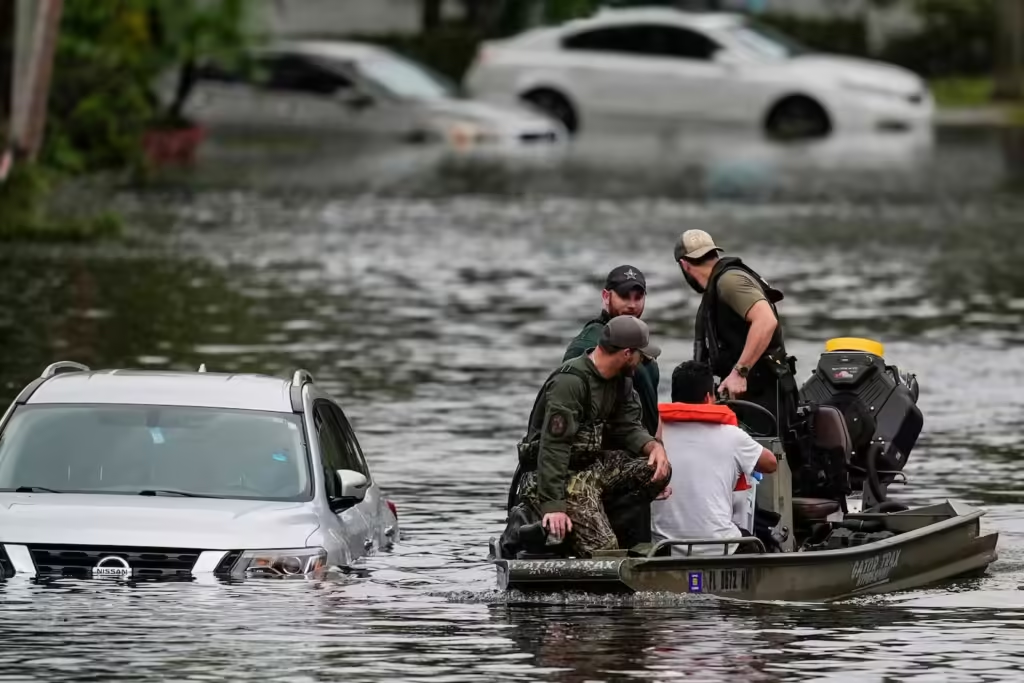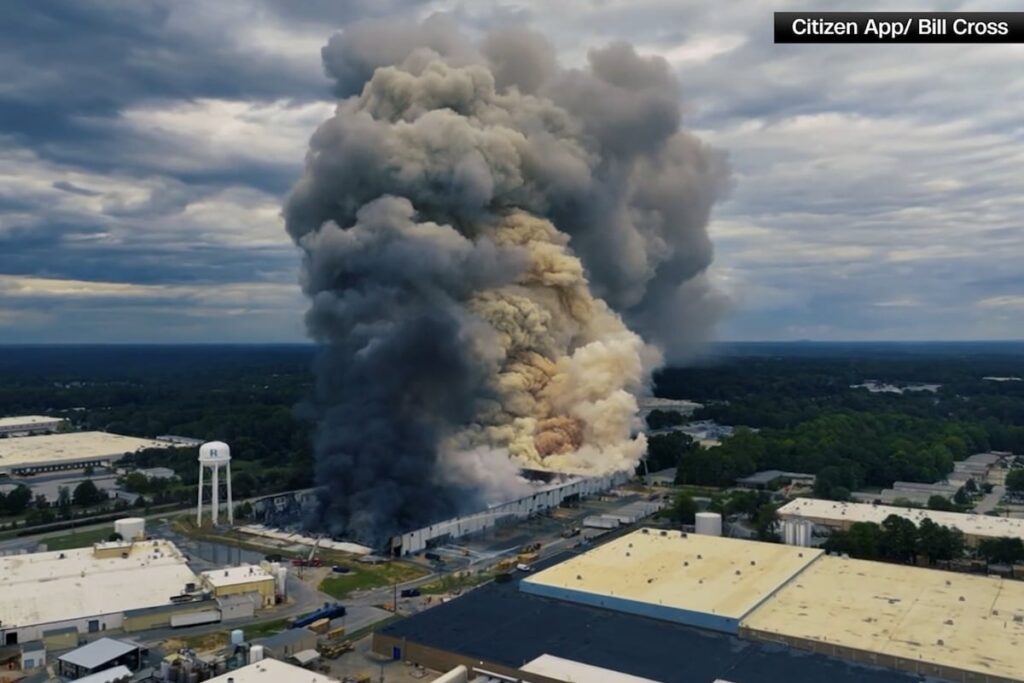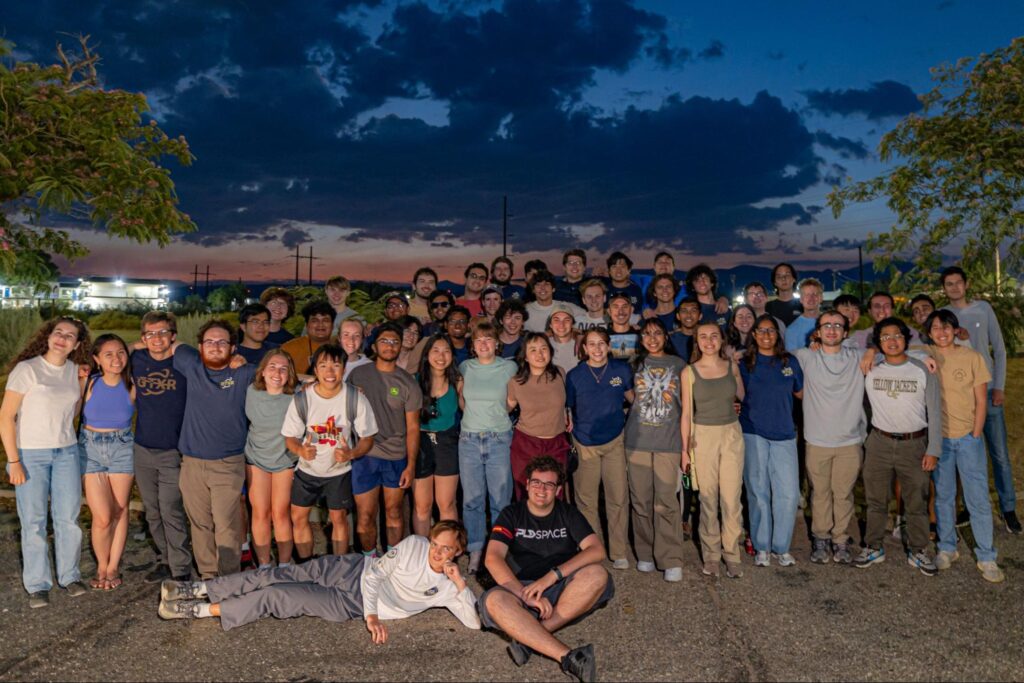
Following Hurricane Helene’s toll on Florida’s Big Bend, Hurricane Milton landed on the west coast of Florida and tore through the state, leaving widespread devastation and fatalities. Many scientists, including Dr. Sarhadi Ali and Dr. Zachary Handlos of the School of Earth and Atmospheric Sciences (EAS), point to global warming and rising sea temperatures as reasons for the storm’s rapid formation.
Hurricane Milton grew at record rates, transforming from a weak tropical storm to a major Category 5 hurricane in less than 24 hours while crossing the Gulf of Mexico on its way to Florida.
Handlos is a senior academic in EAS who serves as an undergraduate advisor and teaches several upper-level meteorology classes. Sarhadi is an assistant professor in EAS whose main field of study is climate extremes, with a focus on tropical cyclones. They attribute the rapid intensification of Hurricane Milton to a combination of environmental phenomena.
“Rapid intensification is defined by the National Weather Service as an increase in a tropical cyclone’s maximum sustained wind speed of at least 30 knots — about 35 mph within 24 hours. That increase can be enough to escalate a storm from Category 1 to Category 3 on the Saffir-Simpson scale. Milton’s wind speed went from 80 mph to 175 mph from 1 p.m. Sunday to 1 p.m. Monday, and its pressure dropped from 988 millibars to 911. Most of that intensification was over just 12 hours,” Handlos and Sarhadi wrote in an article for The Conversation.
Several factors contributed to this rapid intensification, including wind speed, water depth and water temperatures.
“In the southwestern Gulf of Mexico, where Milton formed, water temperatures were at a minimum 85 degrees Fahrenheit, if not warmer than that. You also want water to be fairly deep, usually about 200 feet deep or greater, to sustain temperatures that warm. So all those things just came together at the right time. And it’s important to note that water temperatures in the Gulf of Mexico are at record levels this year. So during an already warm season, the waters are even hotter than usual,” Handlos said.
Sarhadi further explored the underlying causes of the rapid intensification and examined whether it was a result of natural variability or influenced by climate change.
“Most of the heat from global warming is absorbed by oceans and studies have shown that in the Atlantic Ocean, global warming has likely increased the frequency and intensity of major hurricanes like Milton. Researchers run models to simulate hurricane activity both with and without the influence of greenhouse gas emissions. When greenhouse gasses are factored in, the models show a trend of increasing hurricane frequency and intensity, matching what we’re seeing today. So, we can say that it’s very likely that the heat from global warming is contributing to the intensification and increased frequency of hurricanes, especially in the Atlantic,” Sarhadi explained.
Along with the hurricane’s size, the accompanying rain and storm surges were said to be record-breaking and detrimental for Florida.
“As for storm surges, after Milton intensified, it dropped to Category 4 and then regained Category 5 status before making landfall as a Category 3 hurricane. During this process, an eyewall replacement cycle occurred, causing the hurricane to grow in size. As the hurricane grows, it pushes more water from the ocean toward land, generating storm surges. Essentially, the high winds and increased size of the hurricane pushed more water, similar to a tsunami,” Sarhadi stated.
The severity of Hurricane Milton was evident through its devastating aftermath in Florida and the solemn reactions of experienced meteorologists and scientists. NBC Miami meteorologist, John Morales, became visibly emotional while reporting on Hurricane Milton in anticipation of its landfall.
“I apologize,” Morales said through tears, “This is just horrific. The maximum winds are 160 mph, and it is just gaining strength because the seas are just so incredibly hot, record hot. You know what’s driving that — I don’t need to tell you — global warming, climate change.”
Handlos and Sarhadi pointed to an upward trend in the number of intense hurricanes since the 1980s. As for the future, Sarhadi explained that predictions indicate that this trend will continue.
“This is an active area of research. Based on current models, it’s expected that with continued global warming, we’ll see more intense hurricanes, at least in the Atlantic Basin. While the overall frequency of tropical cyclones worldwide may not change significantly, the frequency and intensity of major hurricanes, those in the higher categories, will likely increase. The extent of this increase is uncertain, but with more global warming, say two to three degrees, it’s very likely we’ll experience more intense hurricanes. Generally, the total frequency of tropical cyclones may remain stable, but the stronger storms, category 3 and above, will become more frequent,” Sarhadi stated.
With the increase in the frequency of hurricanes, comes a rise in inland hazards.
Sarhadi said, “So, the three main hazards are high-speed winds, storm surge, and freshwater flooding. And it’s not just coastal areas at risk. Inland areas can experience significant rainfall and flooding, as we saw in Western North Carolina where hundreds of people were killed by heavy rainfall during Hurricane Helene. We need to prepare for more intense hurricanes, both in coastal and inland areas, and adapt our infrastructure to minimize damage.”
When asked what governments, communities, and civilians can do to minimize the hazards caused by the hurricanes, Sarhadi proposed a two stage approach: mitigation and adaptation.
“We need to push governments and policymakers to reduce greenhouse gas emissions and keep global warming to a manageable level, like under the two-degree target set by the Paris Agreement. Beyond that, things will get more chaotic.” Sarhadi said.
The post Hurricane Milton’s Rapid Intensification Brings Mass Devastation to Florida appeared first on Technique.




